Overseas Case: University of Science and Technology of China (China)
Improving Science through Collaboration, Support, and Internationalization
How did USTC become a premier research institution in a mere 60 years? The answer seems to lie in their ability to nurture scientific talent. We spoke to Prof. Yi-Fu Cai of USTC, who not only leads the renowned Particle Cosmology (COSPA) Group but is also in charge of two successful researcher development programs—the Future Scientist Exchange Program (FuSEP) and the Vision, Internationalization, Study, Think and Aspiration (VISTA) program. In an engaging conversation, Prof. Cai explains the importance of encouraging young researchers and how to build successful researcher programs.
Abstract
The University of Science and Technology of China (USTC) is the cradle of Chinese scientists. Established in 1958, it has grown to become a world leader in science and technology. USTC has five campuses, 2,047 faculty, and 16,245 students.
USTC has many researcher development programs. Prof. Cai heads the Future Scientist Exchange Program (FuSEP), which brings together young researchers from all over the world so that they can learn the latest scientific knowledge, collaborate, and gain international experience. He also proposed another program called the Vision, Internationalization, Study, Think, Aspiration (VISTA) program, which gives domestic support to gain international experience. These programs have produced many successful collaborations and researchers, and improved the reputation of USTC worldwide.
Interviewee’s Bio
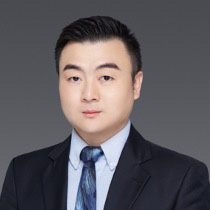
Prof. Yi-Fu Cai is an eminent astronomer and head of the Particle Cosmology (COSPA) Group at USTC. As a young high school student, he benefitted from the School of Gifted Young Program, which set him on the path to becoming a successful researcher. Now, he leads many researcher development and internationalization initiatives at USTC.
Looking to the stars for answers
Tell us a little about yourself, your department, and your work.
I am a Professor in the fields of physics and astronomy. I head the Particle Cosmology (COSPA) Group at USTC. Our COSPA Group consists of three faculty members including me, and more than 10 young researchers, of which four are international young researchers. We are a very collaborative group and I always take the time out to hang out with them or have coffee discussions with them. In our work, you have to come up with big ideas. Our collaborative environment helps us brainstorm new ideas and directions in which to guide research. In essence, our research focuses on the questions, “What is the origin of the universe?”; “Where did we come from?”; “What is the universe like currently, and what is its destiny?”
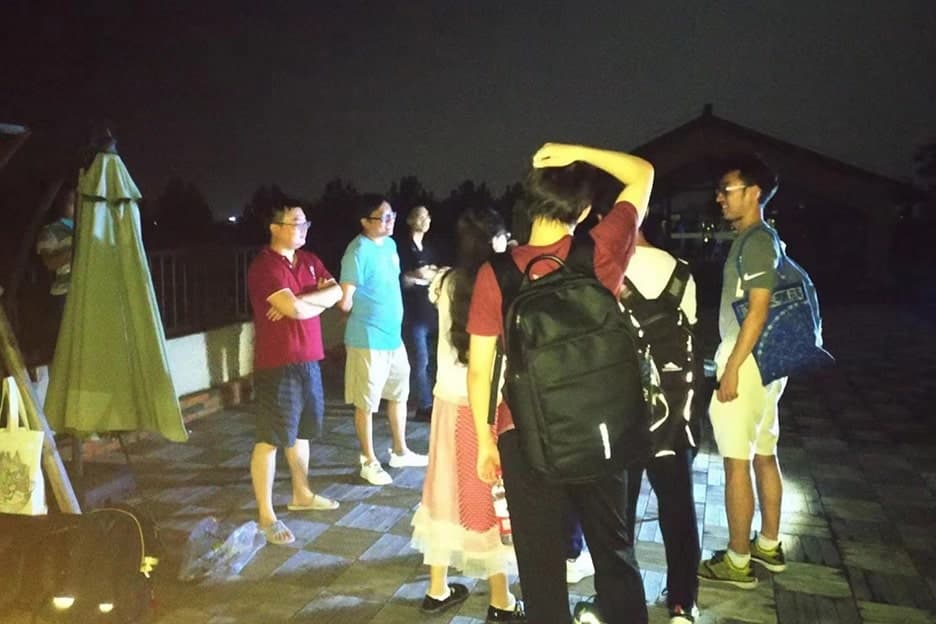
Prof. Cai at USTC is paying forward the benefits of the researcher development that helped him reach where he is today by guiding the next generation of researchers (Image courtesy: Yi-Fu Cai, USTC)
Funding support is essential
Why do you believe researcher development is important? How do you think this program is beneficial to researchers?
A proper researcher development program is very crucial for every young researcher who has just started their academic career. In particular, some kind of funding support is essential because it provides a guarantee to the young researchers that they can carry out their research in a stable environment. In my case, after I finished my postdoctoral tenures, I was able to get very stable funding support thanks to the National Young Talent Program, and this enabled me to start the COSPA Group.
One of the aims of our group is to encourage young researchers to consider their existing portfolio of skills, as well as any skills they hope to gain during their research and enable them to become highly skilled, employable, and effective researchers in the future. This is why researcher development is so important.
Can you share any examples of researchers from your group who have benefitted from this?
I love using myself as an example, because I am someone who got a lot of benefits from one-on-one researcher development. During one of my postdoctoral tenures, I got to work with a very famous cosmologist called Robert Brandenberger, who is now associated with McGill in Canada. Thanks to his supervision, I was able to access the frontiers of the international cosmology study and thus earn my own reputation in the field.
This experience is also why I always select talented international young researchers from developing countries who do not have the resources to exhibit their talents. The USTC fellowship allows them to focus solely on their research. These international young researchers have already made many achievements and of course, we are hoping for more in the near future.
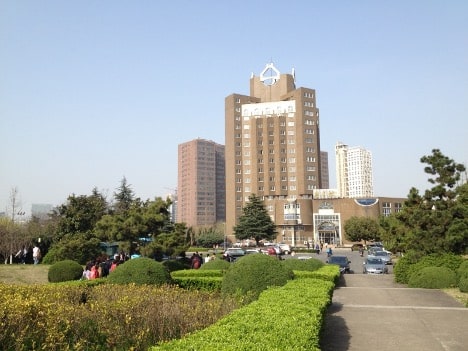
USTC provides fellowships to help nurture young researchers, as well as enable domestic and international young researchers to experience research opportunities both within China and abroad (Image courtesy: iGEM)
One single person, one single country cannot solve the world’s problems
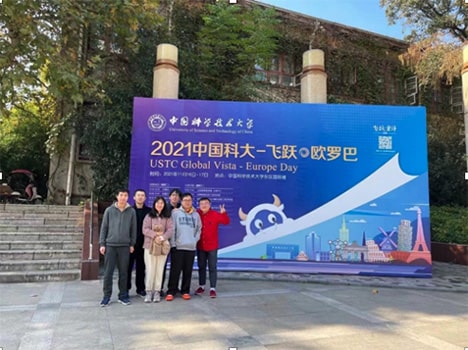
The VISTA program helps young Chinese researchers gain international, interdisciplinary experience, and learn, collaborate, and grow as scientists and academics (Image courtesy: Yi-Fu Cai, USTC)
How do you envision researcher development? What sort of activities or projects have you undertaken at USTC with this aim?
I am a part of a project here at USTC called the Future Scientist Exchange Program, or FuSEP. FuSEP actually has a very tight connection with JST every year, so thanks to JST for offering this program support.
The FuSEP is a pack of incoming programs initiated at USTC, where we aim to bring in the most excellent young researchers from all over the world. We invite these researchers to come to USTC and to exchange ideas and do very tight brainstorming, and we try to search for solutions to global challenges through science and technology. Of course, because of the pandemic, everything was virtual. I took charge of the program three years ago and we have really expanded its scope and pushed it a lot since then.
There is also another program that I postulated called the Vision, Internationalization, Study, Think, Aspiration (VISTA) program. Here in China, we have a program called the School of Gifted Young, and I, myself, was a part of that program. It started in 1978, and China was far from developing at that time and we needed a lot of researchers and talents. Thus, our government started this program at USTC, where select young researchers are enrolled into the university and they are given solid academic foundations in the fundamental subjects and then eventually allowed to branch out into more specialized and interdisciplinary fields.
The VISTA program is aimed at domestic young researchers like those from the School of Gifted Young and it provides these young researchers with a very internationalized interdisciplinary environment with plentiful international internships etc. We have a collaboration with the JST too, called the Sakura Science Program. Young researchers are invited to join this program so that they can gain international experience by travelling to Japan and experiencing some top universities like the University of Tokyo, Kyoto University, and so on.
What was the motivation that kickstarted these programs?
The FuSEP comes from a desire to support the internationalization of USTC. Most current problems like the pandemic or global warming are not limited by borders or countries. To tackle such problems, we need not just the best and brightest minds, but also different perspectives and viewpoints. That is something that can only be obtained through internationalization. With the VISTA program as well, just 50 years ago, the USTC had no international reputation and now it is among the top 100 universities in the world. One single person, one single country can do nothing. If we want to make achievements in science and technology, we need the world to pitch in.
What was the budget for these programs?
The amount fluctuates. The very first year of the program—that was before my time—we enrolled only about 10 young researchers. Fast forward to this year, despite the pandemic, we had about 100 young researchers participating in the summer camp online. Therefore, the budget is going up every year. In 2021, we organized two summer camps, one aiming at physics and the other at biology, medicine, and artificial intelligence. It was an online event and the total budget worked out to about half a million RMB.
What support did you receive from USTC for these programs?
The university supports my activities a lot. The money comes from the USTC fellowship. It covers a lot of things, such as support for international visiting professors, international visiting young researchers (like those who come for FuSEP), and for international young researchers studying at USTC. This fellowship also helps domestic young researchers go abroad and experience international education.
Our programs help young minds gain a broader perspective
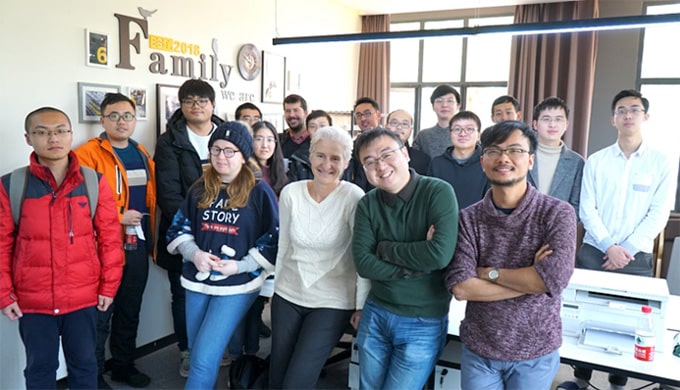
Young researchers need to gain international experience to develop and grow, which will in turn allow them to return home in the future and guide scientific research and innovation (Image courtesy: Yi-Fu Cai, USTC)
Can you tell us what impact these programs made on the research community?
Both the FuSEP and VISTA program are pretty young, at about seven years and two/three years old respectively. I cannot make too much of a comment on what impact it has had on the research community, but I can tell you that many of the young researchers who have gone through these programs are doing well.
One of the young researchers who went through the VISTA program made a very crucial and famous discovery in the field of material science and condensed matter physics. He is only about 25 now! There are also many young researchers I know who work in industry, and some of the young researchers who went through these programs are now key members of companies like Huawei and Cambricon.
How do other researchers view this program? What is the general response to the program, and to the concept of researcher development at your university?
From my observations, most of my colleagues and friends and fellow researchers view this program as very successful. I have not done any data analysis on the program yet and I have named only a few examples, but I believe in the future there will be more and more successful cases.
We are quite lucky that we are supported not just by our university and colleagues, but by our city, Hefei, as well. The university is a big part of the city’s plans for development, and this will certainly help us pursue our plans of researcher development in the future.
Science has no border
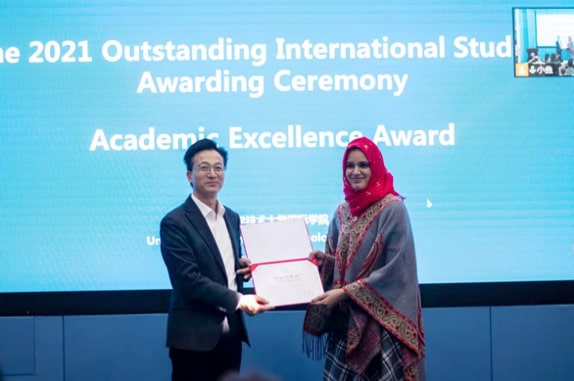
Grants, fellowships, awards, and other forms of support are essential for young researchers to grow and develop, and thus further scientific innovation and education (Image courtesy: Yi-Fu Cai, USTC)
How have these programs influenced the research ecosystem of the COSPA Group and of USTC as a whole? How has the programs influenced the careers of researchers?
Part of the reason I pushed on these programs is that we get a lot of benefits from them. My group had a young researcher from the School of Gifted Young who got the chance to go abroad because of these programs. The experience helped him open up to what professional research is abroad, and when he came back, he did several projects with me in the COSPA Group, and I did not really have to supervise him because he was self-motivated to do scientific research. Now, he is doing his postgraduate studies in Princeton with a reputed scientist.
Another one of my students is doing a postdoctoral tenure at Cambridge. One is in Italy at the prestigious National Institute of Nuclear Physics. Another one has moved on to the University of Tokyo, where he is a very crucial member of the team. Three of my international young researchers are from Pakistan, and the three are all women, who now have the opportunity to do scientific research at USTC and develop their talents.
In the future, some of the domestic young researchers who went abroad will come back like I did, or the international young researchers I am teaching will go back to their home countries, and like this we will help develop science and technology all over the world. Even if only a few young researchers go back to their home countries, that is enough to transform the landscape of research and development there. After all, that is what happened in China. Even if they do not, we cannot say we are losing these talented minds because countries have borders, but science never has a border. In this way, the work we do is improving the lives of people all around the globe.
Young researchers have unlimited potential
What advice would you give to researchers who wish to organize researcher development projects at their own universities, or to universities and organizations that wish to establish these projects?
I think in general, for any university in the world, international cooperation in science and technology worldwide should be the goal. Something that can help achieve this is the correct support. All of my projects here have been supported by the USTC fellowship. That is not the full extent of support we receive here. As I mentioned, some of my young researchers are also working in industry. A few years ago, one of the young researchers at USTC said, “I want to build a company,” and the local government said, “You do not have to worry about the money, we will do the investment, you can focus on the innovation.” This helped the company develop very rapidly and now it is an internationally known company. This has attracted international companies to our city too, and they provide internship opportunities to our young researchers.
Interview date: November 2021
Interview cooperation: Cactus Communications
